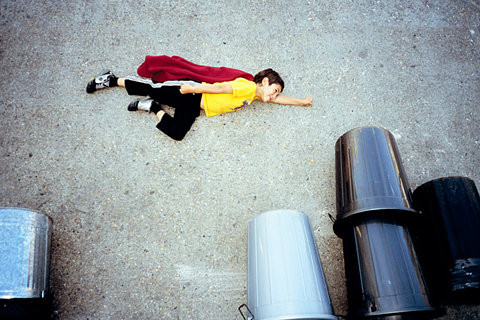“My aunt died and my parents did not want to tell me. I over heard them talking and they said that they were going to tell me that she had gone away to the country. But this was not a shock to me because I thought that dead people could come back”.
Not only did the parents little scam of not telling the child the truth not work as they were overheard, but the child would not have been distressed anyway because of her undeveloped understanding of the concept of death due to her age.

The truth?
It is sometimes noted that about the age of 8 years a child can get what is sometimes called “8-year anxiety” where they develop a pronounced fear of death. As Piaget has shown prior to age 8 the child is egocentric with magical thinking that involves prelogical thought. As a result of this children under 8 often think that death is reversible or that the dead can still see, hear and feel. At about age 8 the child’s thinking matures enough to allow it to understand that death is not reversible and thus it can hit that stage of “8-year anxiety” when it realises what is going to happen one day when it dies and when mummy and daddy die. In essence the child has an ‘existential crisis’ and has to come to terms with its own mortality for the first time at the tender age of 8 years which must be fairly hard for the little ones to do.
This woman’s statement was just so clear of this psychological phenomena that I noted it down and it does highlight one of the possible causes of childhood and adolescent suicide. The person at the point of making the suicidal act does not truly comprehend the consequences of what they are doing. In fact what they believe is going to happen maybe quite a distortion of the truth, such that death is reversible.

This is one of the four particular suicidal groups and I have called it the naive suicide group. Of course all adults also have a Child ego state. That is there is a four or five year old in all of us that remains until the day we die. For some people it can be quite pronounced and thus as an adult they can actually feel, behave and think in quite a child like manner. Thus part of them can believe at the age of 30 that death is reversible because they have a strong immature part where the Child ego state is quite influential. Such a person’s Adult ego state would know the facts about death but they also have a child feeling or understanding about it as well that is contradictory to the Adult facts.

Teenagers are in that twilight zone between
strong adult thinking and child like prelogical thinking.
At times they will oscillate between the two.
This phenomena is also particularly evident for some suicidal teenagers which makes suicide risk prediction particularly difficult for this group. The teenager may not show many of the usual indicators of suicide risk, especially the presence of the suicidal decision, the “Don’t exist” injunction, but still be at quite a high risk because of the reason I am just discussing as was highlighted by the woman’s comment. In suicide risk assessment I always feel much less sure when working with a teenager than working with an adult.
Graffiti
No comments:
Post a Comment